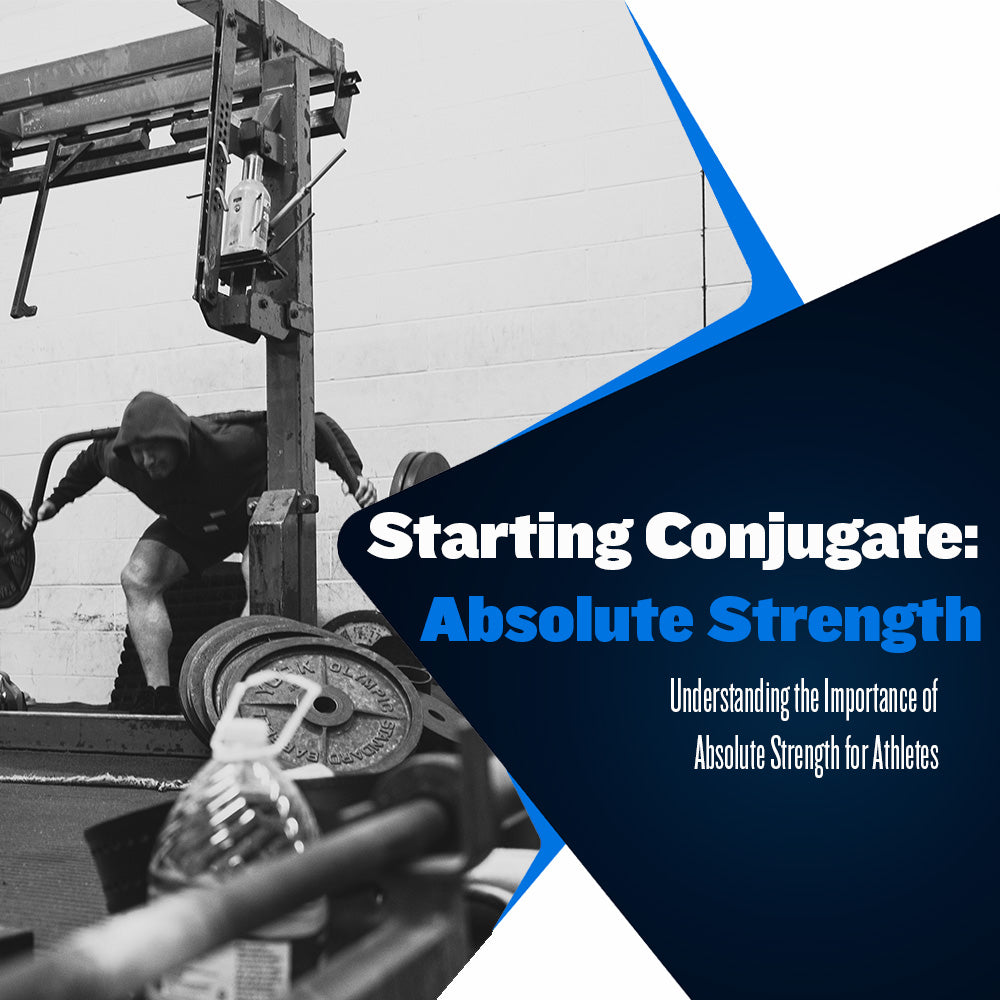Starting Conjugate: Absolute Strength Development

No matter the sport you compete in, possessing high levels of brute strength is never wrong. Not only will this strength allow you to dominate physically, but it will also allow you to be a tougher, more resilient athlete. However, this is not always the focus when a strength coach prepares an athlete for sport.
Today, many strength coaches opt for exercises that exclusively develop explosive strength, with many of these designed to mimic athletic movements associated with whatever sport the athlete plays. Aside from that, the next focus is typically GPP development to raise work capacity and overall fitness.
Is it wrong for a strength coach to develop an athlete's explosive power and work capacity? Of course not. Your programming should continuously improve your explosive power and GPP. The issue lies in what many coaches exclude from their programming; max effort training to develop absolute strength.
The Need for Absolute Strength
Developing absolute strength isn't something you should consider; it is something you must do. Failure to focus on the development of absolute strength prevents athletes from reaching their true athletic potential. For other stats to improve, absolute strength is the stat that athletes must improve.
Your absolute strength level controls your maximum ability to develop explosive strength. Higher levels of absolute strength mean you have the potential to jump higher and run faster. Your ability to be more athletic improves as your absolute strength improves.
Oddly, one of the biggest reasons strength coaches avoid max effort work is fear of injury. Suppose you are not exposing your athletes to intensity levels that regularly recruit maximum amounts of motor units. In that case, you are putting your athletes at a much greater risk of injury than they would be if they trained max effort every week.
It's simple; the stronger athlete will typically have the ability to jump higher or run faster and be more resilient than athletes of similar size. The stronger athlete will prevail when sports skills are evenly matched.
Avoiding Catastrophe
To properly execute a training program that includes weekly max effort training, a coach must understand how max-effort training works. This is one reason all strength coaches must read and train; executing the methods makes sense when you understand both the theory and the application.
Max effort training is high-intensity training, where an athlete performs an exercise at 90% + for a top set of 1-3 repetitions. In the Conjugate system, max effort training is conducted twice weekly, with one day focused on the lower body and the other on the upper body.
Avoiding injury typically comes down to exercise selection, execution, and recovery management. This means a coach must select exercises that specifically develop the athlete's weaknesses, instruct the athlete on how to perform the movement safely, monitor the athlete to ensure the exercise ends at the appropriate time, and monitor recovery levels from workout to workout.
If you can cover those bases, there is absolutely no reason you should not include the use of max-effort training when programming for your athletes.
Absolute Strength is King
As I mentioned above, there is nothing wrong with writing programming that prioritizes the development of explosive power and overall athletic fitness, as long as that program also prioritizes the development of absolute strength via max-effort training.
To reap the full benefits of Conjugate Method training, you must include all aspects of the philosophy. A coach who avoids max effort training is leaving their athletes physically underdeveloped, potentially limiting the career trajectory of these athletes while doing so.
I've posed this question before, but if you have two fighters of equal size, skill, and cardio level, but one deadlifts 800lbs and the other deadlifts 500lbs, which one would you bet your life savings on if you had to? The answer to that question proves absolute strength is King.
Sources:
Simmons, L. (2007). Westside Barbell Book of Methods. Westside Barbell.
Verkhoshansky, Y., & Siff, M. C. (2009). Supertraining. Verkhoshansky.




